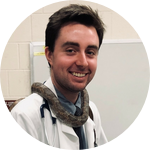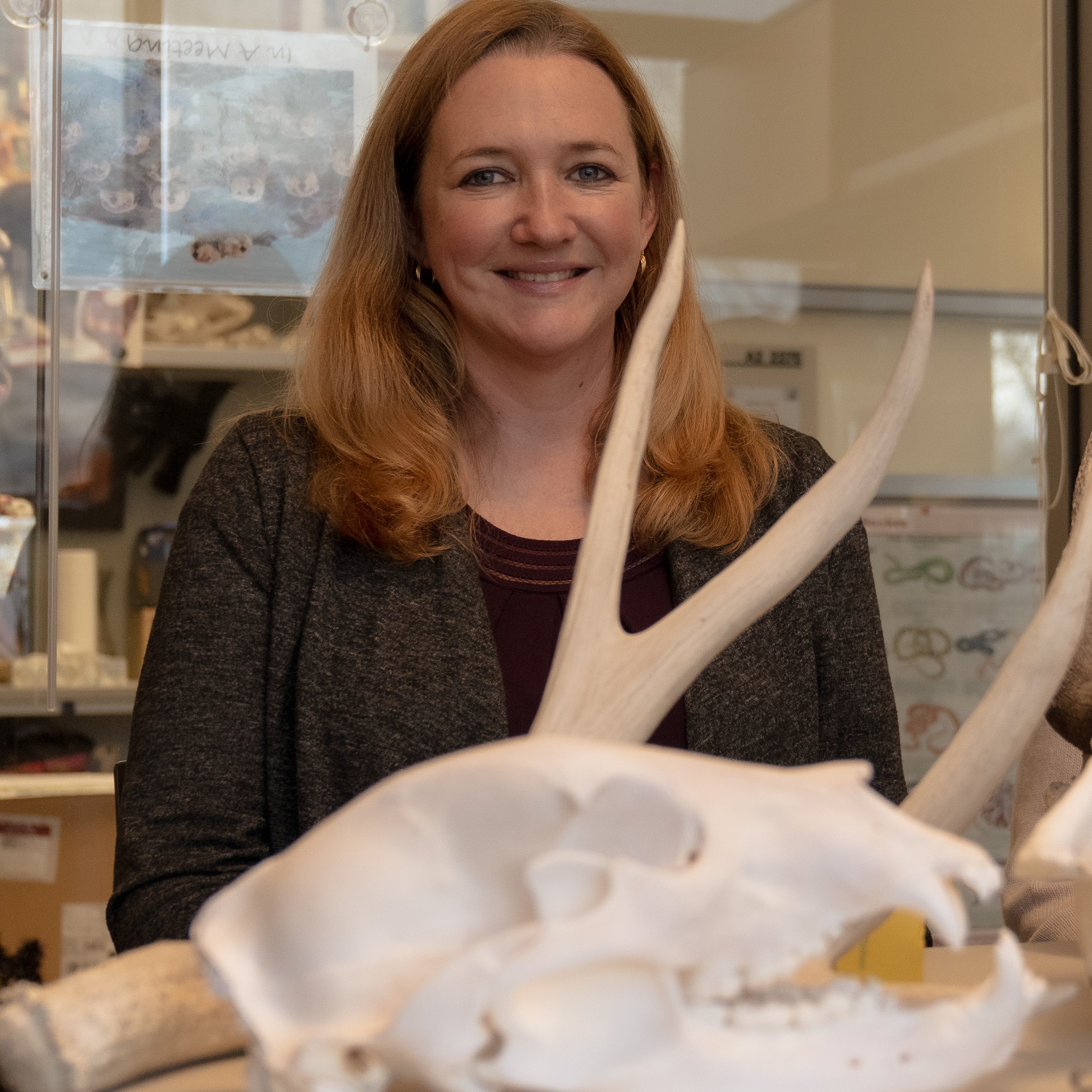About This Project
Hemorrhagic diseases caused by epizootic hemorrhagic disease virus and bluetongue virus are expanding into the Northeast U.S. and represent threats to wildlife and domestic animal health. Since 2020, over 5,000 wild deer are suspected of dying from these novel viruses. These vector-borne diseases, transmitted by biting midges, are potentially driven by climate change-related warming and drought. We will fill in knowledge gaps in the vector cycle to allow for targeted action.
Ask the Scientists
Join The DiscussionWhat is the context of this research?
Beginning in 2020, thousands of wild deer are suspected to have died in New York and New England from hemorrhagic disease (HD), a highly deadly syndrome of wild and domestic ruminants caused by two closely related vector-borne viruses, epizootic hemorrhagic disease virus (EHDV) and bluetongue virus (BTV). Historically, these viruses have not been found in this region - therefore local deer have no immunity to these pathogens and often succumb to a rapid death.
Thought to be driven by climate change, a northward range expansion of these viruses has been observed in recent decades. These viruses have been observed to kill up to 90% of infected deer, and can cause mass die-offs in outbreak areas.
What is the significance of this project?
Despite the risk these viruses pose to wildlife and domestic livestock, there are major gaps in our understanding of the insects which transmit them - Culicoides biting midges (also known as no-see-ums). The species of midge which transmits EHDV is known to be absent or rare throughout the Northeastern United States. Therefore, it is unknown what specie(s) are responsible for transmitting these viruses to deer in our region - preventing targeted control efforts. Further, there is a limited understanding of what climatic and environmental factors may drive outbreak development. As a result, wildlife managers, zoo veterinarians and livestock owners are left with few options for preservation of animal health.
What are the goals of the project?
At this critical period, we seek to fill in these knowledge gaps in the understanding of local Culicoides ecology and climatic drivers of HD outbreaks. By investigating what species of Culicoides are present throughout New York, whether EHDV and/or BTV can be confirmed via testing from these midges, and what animal species they are feeding on, we plan to identify species of midge which warrant attention in the northeastern U.S. as vectors of hemorrhagic disease.
Efforts to understand the role of climatic variables on vector-borne disease dynamics will be of increasing importance as climate change drives pathogen spread into naive regions - information relevant for many pathogens of animal and human health concern.
Budget
PCR test reagents: These funds will contribute towards the reagents and laboratories supplies necessary to run PCR tests (virus testing).
Costs of sample collection: These costs will enable us to collect the large sample size necessary to perform a thorough Culicoides population assessment and disease prevalence testing. This includes vehicular costs associated with the significant travel throughout the Northeast, as we will be trapping midges throughout multiple regions of New York and surrounding states.
Cost of shipping/transporting samples: This will support our capacity to transport samples to the necessary expert laboratories for analysis. We expect to collaborate with multiple laboratories throughout the continental U.S.
Endorsed by
 Project Timeline
Project Timeline
Beginning in July and continuing into October, 2023 we will biweekly trap midges at field and farm sites. Late summer-to-early fall is peak midge season, and we expect to collect thousands of specimens. Traps will be deployed overnight at multiple locations throughout the lower- and mid-Hudson Valley and Long Island, corresponding to locations where we have observed significant mortality in wild deer.
Jun 26, 2023
Project Launched
Jul 03, 2023
Field season launched
Oct 13, 2023
Field season completed
May 01, 2024
Finish species identification, disease prevalence analysis and bloodmeal analysis of midges
Dec 01, 2024
Complete climatic modeling
Meet the Team
Affiliates
Team Bio
The Cornell Wildlife Health Lab promotes the health and long-term sustainability of wildlife populations by advancing scientific tools and sharing knowledge to protect and improve the health of native wildlife populations. The lab is based at the Cornell University College of Veterinary Medicine Animal Health Diagnostic Center, and partners with New York State Department of Environmental Conservation through the the New York State Wildlife Health Program.
https://cwhl.vet.cornell.edu/c...
Patrick Connelly
Patrick Connelly is a wildlife veterinarian and researcher, with experience working for domestic and international wildlife health and conservation programs. Dr. Connelly received his Doctorate in Veterinary Medicine from Cornell University in 2020. He is currently pursuing a PhD at Fordham University, investigating drivers and dynamics of epizootic hemorrhagic disease virus and bluetongue virus in the Northeast U.S., in collaboration with the Cornell Wildlife Health Lab.
Patrick is primarily interested in research which provides solutions to health and conservation threats facing North American wildlife. He has been involved in projects which study the population impacts of ingested lead on bald eagles, parasitic threats to moose, and the role of the wildlife trade in the global spread of chytrid fungus. As a veterinarian, he has conducted surveillance for zoonotic diseases in wild carnivores in New York City, and trained staff in medical procedures and techniques at the Chengdu Research Base of Giant Panda Breeding in China.
Tom Daniels
Tom Daniels is a vector biologist and disease ecologist with decades of experience studying vector-borne diseases in New York. Dr. Daniels is a Professor in the Department of Biological Sciences at Fordham University and the Director of the Louis Calder Center Biological Field Station.
Krysten Schuler
I have a weird job - I try to figure out how to keep wildlife populations healthy. A lot of that involves dealing with dead stuff. Not the most glamourous thing to do, but I think it's important that wild animals have someone learning about and trying to fix some of the problems we (human) have created for them in this shared world of ours. I am a wildlife disease ecologist and director of the Cornell Wildlife Health Lab, which is a partnership with the New York State Dept. of Environmental Conservation. I work closely with wildlife agency partners to help them understand and solve some of their issues related to wildlife diseases.
Lab Notes
Nothing posted yet.
Additional Information
We have completed two years of surveillance for EHDV and BTV in apparently healthy wild white-tailed deer across New York and New Jersey in an effort to better understand the population impacts of these viruses on local deer populations. We found that in high EHD case zones, up to 40% of deer had antibodies to the virus, likely indicating a significant mortality rate in the population. We plan to incorporate our deer data into this analysis to better understand this emerging system.
Project Backers
- 6Backers
- 28%Funded
- $840Total Donations
- $56.67Average Donation




